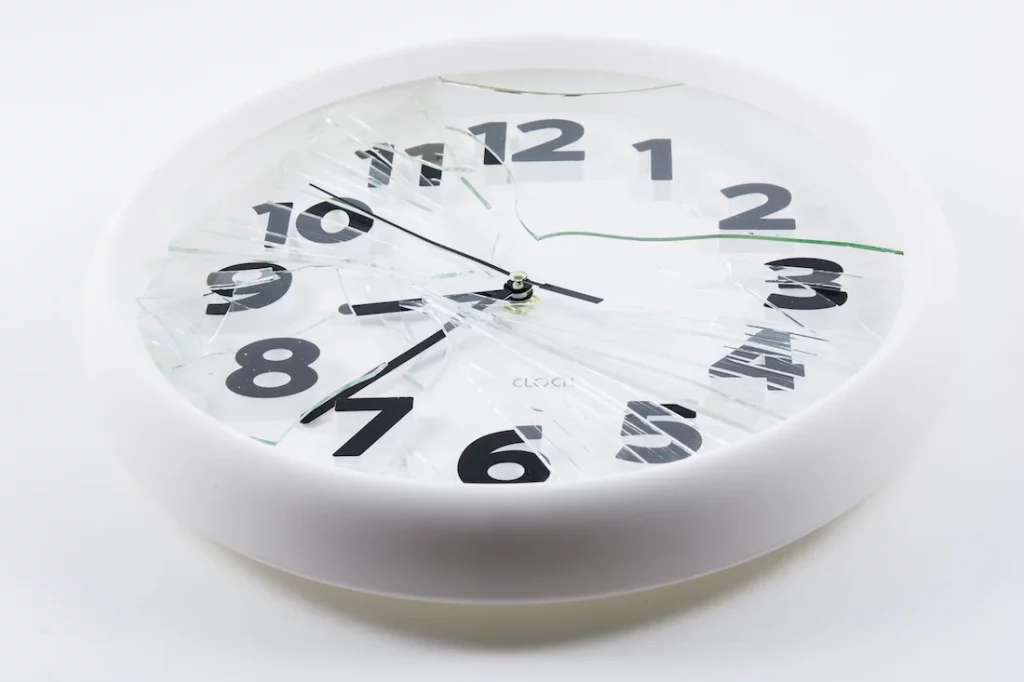Troubleshooting clocks that aren’t keeping time in a clock system can be a systematic process. Here’s a step-by-step guide to help you identify and fix common issues:
- Check Power Supply:
- Ensure that the clocks are receiving a stable power supply. Fluctuations or interruptions in power can affect their accuracy.
- If the clocks are battery-powered, make sure the batteries are fresh and correctly installed.
- Examine External Factors:
- Identify any external factors that might affect the clocks, such as temperature extremes, humidity, or magnetic interference. These can impact the precision of some clock movements.
- Inspect the Hands:
- Check if the clock hands are touching or interfering with each other. Misaligned hands can cause friction and affect the timekeeping.
- Inspect the Clock Movement:
- Examine the clock movement (the internal mechanism). Dust, debris, or worn parts can disrupt its operation. If the movement is accessible, consider cleaning it or having it serviced by a professional clockmaker.
- Check for Pendulum Issues:
- If the clock has a pendulum, ensure it is properly attached and swinging freely. Adjust the pendulum’s length if necessary to achieve the correct timekeeping rhythm.
- Verify Correct Time Setting:
- Ensure that the clock is set to the correct time. Some clocks may have multiple time-setting options (e.g., 12-hour vs. 24-hour format). Confirm that the setting matches your desired time format.
- Calibrate the Clock:
- If the clock has a calibration feature, use it to fine-tune the timekeeping accuracy. Consult the clock’s manual for instructions on how to calibrate it.
- Test the Clock Hands:
- Gently move the clock hands to the correct time position (without forcing them). Confirm that they move smoothly and do not get stuck.
- Monitor for Consistency:
- Keep an eye on the clock’s timekeeping accuracy over several days. Clocks may have slight variations, but if they consistently lose or gain significant time, it’s a sign of an underlying issue.
- Consider Maintenance:
- Clocks, especially antique or vintage ones, may require periodic maintenance by a professional clockmaker. Regular servicing can address wear and tear and ensure long-term accuracy.
- Replace Parts:
- If you identify specific worn or damaged parts during inspection, consider replacing them. Replacement parts are often available for common clock movements.
- Seek Professional Help:
- If you’re unable to diagnose or fix the problem, or if the clock is a valuable antique, consider consulting a professional clock repair specialist. They have the expertise and tools to handle complex repairs.
- Evaluate Synchronization (for synchronized systems):
- If you have a synchronized clock system (e.g., for a business or school), ensure that the master clock is correctly synchronized with the secondary clocks. Any discrepancies can lead to timekeeping issues in the entire system.
- Consult Manufacturer Support:
- Contact the clock manufacturer’s customer support for guidance if your clock is under warranty or if you need specific troubleshooting advice related to your model.
Remember that troubleshooting and repairing clocks can sometimes be a delicate process, especially for valuable or intricate timepieces. If you’re uncertain about your abilities or the clock’s value, it’s often best to consult a professional clock repair specialist to ensure proper restoration and accurate timekeeping.

